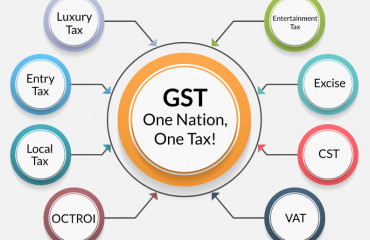
The Government has made many changes with respect to self-certification of audit reports, creating a compliance driven process through interplay of GST returns, e-way bills and the e-invoicing system.
India is looking at the year 2022 with eyes wide open for a positive daylight after the catastrophic year and a half due to the pandemic and the tax structure is an integral part of the revival plan.
Goods and Services Tax (GST) has been taking small steps in solidifying its position which has been questioned time and again by experts and corporates owing to various lags and ambiguous provisions. The year 2022 may witness a likely rejig of the GST provisions and rate slabs keeping in mind the demands of the industry, but also focussing on meeting its tax targets, given the sustained economic resurgence from the pandemic.
Technology driven tax administration
Digitisation will be the mantra for the coming year, with a major shift to a digital economy tax regime. This will have a huge impact on the way India levies tax on offshore digital economy firms having a customer base here which has also become a major concern for such overseas entities.
Further with recent emphasis on matching of returns to claim benefits of
under GST, tax authorities will be laying greater emphasis on use of technology by way of data analytics and enforcement of compliance, tax administration, assortment of information from third parties and enhanced communication between regulators and investigating agencies. Since tax authorities have been able to detect tax evasion in the form of fake invoicingthe help of IT tools, it is expected that technology-based tax administration would gain greater importance in the coming year.
Rate rationalisation
This is something that we have been talking about since the inception of GST. Rationalization of GST tax rate slab structure and advancing the efficacy of the indirect tax system in India will be key focus for the policy makers. It is expected that the current 4 rate slab structure will be reduced to three slab structure by withdrawing major exemptions. This change will also lead to correction of inverted duty structure on various goods apart from increased as part of the rationalization.
Customs duty changes to support Aatma Nirbharta
With the focus of providing impetus to indigenous production, the Government is expected to continue to lower customs duty on raw materials, parts and components to be used by Indian manufacturers and simultaneously increase duties on import of finished goods in support of the Make in India scheme.
Reduction in compliance burden
There has been huge hue and cry regarding the aspect of ease of doing business for MSMEs and SMEs. The MSME sector accounts for 30% of India's GDP and contributes to 40% of exports from India. These sectors have been demanding improvement in compliance burden in every aspect, with minimal statutory compliance.
Recently as a step towards reduction in compliance burden, it has been announced that taxpayers with annual aggregate turnover up to Rs 5 crores are not required to file the reconciliation statement in Form GSTR-9C for FY 2020-21 onwards. Further, taxpayers having aggregate turnover up to Rs 2 crores are not required to file annual returns in Form GSTR-9 for FY 2020-21.
However, in juxtaposed to these steps, the enhanced restriction for availing ITC with the insertion of the condition of 100% matching of GSTR-1 of the supplier and GSTR-2A/2B of the recipient, will certainly add to compliance burden on the taxpayers.
A taxpayer can reduce its output tax liability by utilising tax paid on the inputs used in their business. Thus, putting such a restriction increases the compliance effort for taxpayers. Thus, it is not enough to be self-compliant, since if the supplier is not compliant, the buyer's ITC claim will not be allowed.
GST Tribunal
A tax structure like India cannot work without a proper appellate forum. The absence of a GST Tribunal under the GST laws has been a long-standing problem which has been duly recognised by the Supreme Court as well. This has resulted in numerous unresolved disputes, with no opportunity to appeal consequently overburdening the High Courts. The non-existence of a proper appellate mechanism even after more than four years of introduction of GST is a big question to the Government's priority and resolution of this issue.
Conclusion
It is evident that the GST landscape has progressed through law and policy changes, automation of compliance, etc. The Government has made many changes with respect to self-certification of audit reports, creating a compliance driven process through interplay of GST returns, e-way bills and the e-invoicing system. However, there are certain aspects where the Government must work towards in the coming year in order to address the concerns of the industry to achieve its target of ease of doing business in India.
